|
Great name for a string quartet! It certainly got my attention (as did the repertoire) and enticed me to buy their debut recording which appears on a label new to me, Solo Musica, produced by University of Music and Performing Arts Vienna.
Listening to this program, the first observation I made was the somewhat curious repertoire chosen for a debut album by a group which calls themselves “Chaos”. The concert opens with Haydn’s Opus 20 #5, which is one of his more serious and slower-moving string quartets. The movement indications tell the story: Moderato; Menuet; Adagio; and a Double Fugue finale. Nothing wild here. They close the concert similarly with another lyrical work, the String Quartet in Eb by Fanny Mendelssohn (Hensel). And these movement titles too are informative: Adagio; Allegretto; Romanze; and finally (!) an Allegro Molto Vivace (which doesn’t feel all that molto in this reading, actually.) I make light of this merely to point out how the music contrasts so strikingly with the group’s feisty name. They don’t play feisty music, nor do they try to make it sound feisty. (More on this below.) I would have expected them to choose more vigorous - more chaotic - music to play. Perhaps that’s why they included some Ligeti in this otherwise well-mannered program. I listened to the music on this program in chronological order (e.g. Haydn, then Hensel, then Ligeti) - which seemed the most logical way to approach it. As my main interest was with the Ligetti, I saved it for last, hoping the group would unleash some playing which would reflect its namesake in his Metamorphoses. And they don't - quite. However (and this is huge) - it has character. And, as such, is a major improvement over the new recording from the Verona Quartet (on Dynamic Records) which I recently reviewed - which was timid to the point of blandness. The Chaos Quartet, on the other hand, excels at characterization and rhythm rather than shock value. I hear a playfulness - almost a charm - to it, which actually encourages the music to dance in ways I would never have expected. All of which captivated my interest. However, this is Ligeti, and I need the savagery inherent in the piece. This music must be shocking - or at least startling. And as good as this is, it doesn't exhibit quite enough of the dynamic extremes which can be positively stunning in the very best readings (for example, in recent recordings from Quatuor Hanson [Aparte] and Quatuor Diotima [Pentatone]). I don’t think it is helped by being uncomfortably sandwiched in between two very traditional Classical works - which doesn’t make much musical sense. (And, for that matter, its very inclusion on this program seems rather out of place.) Nor does it help that Solo-Musica contains the entire piece in just one track (over 21 minutes). Every other recording I know has each section individually tracked - as it should be. However, I don’t mean to be too critical; I did enjoy this reading, even though it would not be a first choice for repeated listening. And the same can be said for the rest of the program too. In fact, I have some reservations with the other two works as well - particularly with the Mendelssohn (Hensel), beginning with the Allegretto. It is perky enough and nicely articulate, but soon, some conspicuous affectation appears out of nowhere in the 1st violin (at the 2’30 mark), with overstated tenutos applied to the top notes of her falling arpeggiated figures - which sound awkward and quite disruptive of momentum. And there is a bit of this from all 4 players in the Romanze as well. More serious, though, comes in the final movement (again at about 2’30) when the violins play severely, starkly without vibrato, in those soaring melodic passages (in octaves) above the busy filigree in the viola and cello. While throughout the program, vibrato is nicely varied - from judicious to sparing (and often not at all) - here it is ruthlessly eliminated right where it needs it most, for no apparent musical reason. Not only does it rob this passage of its lyrical beauty, it exposes a couple moments of insecure intonation in the 1st violin as well - which is a bit troubling. And though the movement begins with an appealing sense of joyousness, it isn't quite molto vivace enough and certainly too on-the-string for my taste. The Haydn was less affected by this, but is a bit more intense and melodramatic than I prefer. (It almost sounds more like [Felix] Mendelssohn than Haydn, and perhaps that was intentional, given the companion work on the program.) They begin the opening Moderato tentatively - with a disarming simplicity and virtually no vibrato - at a tempo slightly slower than usual. It is persuasive in its way and establishes a somewhat distinguished playing style which I rather enjoyed. But the Menuet is a bit too serious, again with minimal vibrato, which may not be to everyone’s liking. The Adagio then is as sweet - and sweetly moving - as one could ever want. But the finale returns us to the seriousness of the Menuet, and could ideally have used a bit more light and dark shading. Comparing this directly with the Quatuor Hanson’s recording of it on their marvelous 2-CD set of Haydn Quartets for Aparte Records (2019), reveals a lighter touch and delicate sweetness from the French group, with airier textures and a more pronounced dynamic range. The 1st movement is taken at a noticeably quicker tempo as well, which is most beneficial. The finale too is more propulsive, even though its timing is identical to the Chaos reading. The Hansons produce a more compelling, interesting and lively musical experience - appropriately so for Haydn. So while the Chaos Quartet doesn’t deliver the chaos I was hoping for (and perhaps I shouldn’t have been expecting it), this is a pleasant and enjoyable concert, imbued with a refreshing sense of spontaneity and afforded excellent recorded sound. This group doesn’t match the exalted levels of excellence heard from today’s very best new(er), young(er) string quartets, but they show much potential - especially in Ligeti. This is a promising debut and I look forward to hearing more from them.
1 Comment
I’m more than a fan. I think I’m even more than an aficionado. John Williams is an inspiration; a musical hero, really. And of course when I saw this production, I had to have it. Even though I have just about everything of his on CD (from original soundtracks, to Boston Pops albums and collections from other conductors, to non-film Classical music), I am thrilled to discover so many new things in this set. Not only some early soundtrack recordings, but interesting and insightful reading in a new interview with the 91-year-old maestro.
This is a Universal Music France production in association with Decca, which contributes some recordings from the Philips and DG labels. It is presented in a huge, bound, hard-back book containing several pages of CD packet enclosures (with still photos from the films and convenient, simple track listings on them), filled with 20 CDs of music and an enormous 44-page oversized paperback book in its own sleeve at the back. The sheer size of it is impressive, although the CD sleeves are attached to thick, heavy-duty corrugated sheets acting as dividers, which make up a large part of its bulk. It also makes it somewhat difficult to remove the CDs from their enclosures without ripping apart the paper sleeves. It’s the most unusual packaging I've encountered. This collection concentrates on the earlier soundtracks, many of which may not be knowingly attributed to Williams. There are also several popular Spielberg scores which will surely satisfy the casual enthusiast. However, I found it odd that this collection almost completely ignores his later soundtracks (from the new Star Wars [1999] forward), thus excluding many wonderful scores of the past 2 decades. (The one exception is the inclusion of 4 short excerpts from the Indiana Jones Crystal Skull reboot of 2008.) The early recordings are impressively remastered, with careful attention as to level matching throughout - from score to score, from a multitude of sources. Most CDs are generously filled, many with over 70 minutes of music. Let’s start with a brief overview of what we get: Discs 1 & 2 – excerpts from several Boston Pops albums recorded in the 1980s by Philips Discs 3 - 7 – Early, rare scores for TV and film - including a disc of Disaster movies and another of Westerns Discs 8 - 12 – Some of the more familiar Spielberg films Disc 13 - 17 – Offerings from filmmakers Oliver Stone, Ron Howard, Sydney Pollack and others Disc 18 – the abysmal 2019 DG disc of violin arrangements made for Anne-Sophie Mutter Disc 19 – Concert works Disc 20 – Songs and instrumentals THE MUSIC The first 2 discs of Boston Pops excerpts are the usual, familiar fare which most collectors will already own. These are splendid, zestful readings which still sound excellent. Recorded in the early days of digital, they are brighter and more immediate than the traditional Philips house sound - appropriately so for this music. (See complete track listings below) *Note: Everything on Discs 3-17 described below is taken from Original Soundtrack Recordings (as opposed to Boston Pops concerts) - with one notable exception on Disc 7 (detailed in the text). With Disc 3, the real discoveries begin. Dating from the 60s, these scores have a nice blend of swing and jazz instrumentals, heavily laden with trumpets and saxes. Yet even here, there are hints along the way of the John Williams (JW) to come. There is always his amazing gift of melody, no matter the style or genre. A couple of tracks also include a small vocal ensemble, ala Henry Mancini. Interestingly by 1967, in the score for Fitzwilly, one can hear the more familiar JW sound begin to emerge more distinctly - with a quirky, playful humor and imaginative scoring, portending a style which would later characterize scores such as Home Alone. And in Heidi, the glorious soaring melodies on massed violins become more evident. I hear bits of what would later inhabit the soundworld of ET, Jurassic Park and, especially, Hook. Discs 4 - 7 take us to the 70s – pre-Spielberg (i.e pre-Jaws) On disc 4, Cinderella Liberty (1973) is completely different from just about everything else, with a decidedly 70s feel, complete with boisterous vocals and harmonica solos. One would never guess this is John Williams, and unsurprisingly, it wasn’t really to my liking. The next score for The River unfortunately jumps out of chronological sequence, ahead to 1984, instantly transporting us to the familiar, richly orchestrated JW scores we know and love. Both of these films come from Mark Rydell, which is why they are (logically) paired together on this disc. Disc 5 – “Disaster Trilogy” (Earthquake, The Poseidon Adventure and Towering Inferno). All great stuff which begins to display the power of the brass which predominates so many JW scores to come. The astute JW admirer will already know these were composed by him, but I suspect many will find this a surprise. The same goes for Disc 6 - relatively unknown JW scores, including an amazing, stylistically varied one for a film by Clint Eastwood (The Eiger Sanction), and 2 short excerpts for Robert Altman (The Long Goodbye - 3 jazz nightclub sequences; and Images - one of his stranger creations with some eerie orchestral effects not unlike that heard later in Close Encounters). Disc 7 is a collection of “Westerns” - including The Cowboys, which is not just the famous concert overture everyone knows, but a complete film score for a John Wayne movie. Inexplicably, it is the familiar Overture played by the Boston Pops which is included here (and nothing else) rather than excerpts from the actual soundtrack. (Sigh...) The majority of the disc is taken up with soundtrack excerpts from The Man Who Loved Cat Dancing and The Missouri Breaks. Frankly, I would much rather have had something from The Cowboys than Cat Dancing, which isn't JW at his finest (and sounds absolutely nothing like a Western). Then we get 5 CDs of several familiar scores from Spielberg films. Starting with a disc of music from Jaws I & II, followed by various excerpts from the original soundtrack recordings for ET, Always, and all 4 Indiana Jones movies. We also get the complete original soundtrack albums for Jurassic Park and Schindler’s List. There are some conspicuous omissions from this period though, including one of my favorites, Hook (other than the short Flight to Neverland in the slick DG/Dudamel/LA concert recording of it), The Lost World, and Saving Private Ryan. Even fan favorites such as Close Encounters, Star Wars Trilogy, Superman and The Witches of Eastwick are severely underrepresented - appearing only by way of meager, truncated concert suites played by the Boston Pops on Disc 1. (Incredibly, the original Star Wars - surely his most recognizably famous and popular film score of all time - is allotted just 2 tracks.) I understand not everything could be included, but I do wish more were here - especially considering what they give us instead on Disc 18 (more below). Disc 13 - excerpts from the 3 “American” Oliver Stone movies (Born on the Fourth of July, JFK and Nixon); Disc 14 - Ron Howard’s Far and Away (complete soundtrack album); Discs 15 and 17 - very limited excerpts from several lesser-known one-offs for various directors. (See listings below for details); CD 16 is the pick of the lot, containing the complete original soundtrack albums from 2 rarities, Dracula and The Fury, on a single disc. Both came immediately following Star Wars and are some of JW's very finest music. They're played by the London Symphony Orchestra and the late '70s recorded sound is amazingly good. Say what you will about JW as a conductor; the LSO played their hearts out for him. So far the collection has been terrific - fascinating, informative and thoroughly enjoyable - so I'm at a loss why they would dredge up the 2019 “Across the Stars” album for Disc 18. I never understood why Williams participated in this when DG first marketed it, being little more than a gratuitous set of Muzak-y arrangements for Anne-Sophie Mutter to play. I'm dismayed to see it resurrected here when so many soundtrack scores have been omitted. Why not a disc of Harry Potter selections instead? There is a rather grim sampling of JW's Concert Works on Disc 19, beginning with 2 rather unpleasant early pieces. The first is a 1965 Prelude and Fugue for Stan Kenton's "Los Angeles Neophonic Orchestra" and the other is the 1968 Sinfonietta for wind ensemble. Then we jump ahead to 2022, and encounter his new, very long and extraordinarily uninteresting Violin Concerto (#2), written for and performed by (you guessed it) Anne-Sophie Mutter. (I simply don't understand his infatuation with her.) It goes on interminably for over 35 minutes and I could barely get through it all without wandering off into another room both times I tried it. (I have always wished Williams would put a little more "John Williams" in his concert works instead of determinedly trying to not sound like himself. But that's just me.) The disc concludes with his lovely Elegy for cello and orchestra, beautifully played by Bruno Delepelaire and the Berlin Philharmonic. Finally, the Songs album on Disc 20 consists mostly of pop songs composed by Williams for various artists over the course of 6 decades. They are heard here in their original vocal renditions as recorded by those artists. Interspersed among them are a few instrumental (mostly piano) arrangements by Williams, which I actually enjoyed more. (See picture below for track listing) THE BOOK Now to the enclosed book. It is impressive in its magnitude, containing both the original French and an English translation in a large font, making a rather cumbersome number of pages. But what is here is invaluable - including, especially, a fascinating interview with the 91-year-old Williams consisting of 16 intelligent, probing and thought-provoking questions. I’m surprised how much I learned from it. As ever, Williams is humble and charming, graciously giving credit to nearly everyone but himself for his successes. It is so enlightening, I thought I’d share just a few tidbits I found the most interesting. - He played piano for many Henry Mancini recording sessions, and they became close friends. - He took over for Bernard Herrmann after he died to score Brian de Palmas’ The Fury and Hitchcock’s final film, Family Plot. - Of his early film scores, Williams states: “I haven’t listened to them in years. Maybe there are a few decent bars here and there.” - Re: Schindler’s List: After viewing the first edit of the film, Williams refused Spielberg’s request to score it saying, “You really need a better composer for this.” - When composing “serious” music outside the film studio, Williams names composer Edgar Varese as “one of his gods”. And his 1968 Sinfonietta (on Disc 19) sure sounds like it - Yikes! He goes on to claim that his Elegy for Cello and Orchestra (also on Disc 19), which is based on a theme from Seven Years in Tibet, is probably his favorite concert piece. (And mine too.) The book also contains pictures and testimonials (from 2 film directors and a lyricist) and closes with a detailed track listing, complete with essential information such as recording dates, source information, orchestras and any vocalists/soloists (when appropriate). What isn't here, curiously, is a single word about the movies (other than names of the directors) - perhaps emphasizing a dedication solely to the music. This tribute isn't about the movies, per se; it's about the music. In sum, this set is money well spent for any admirer of John Williams. There is a surprising amount of music here that I had not previously heard, making it invaluable, and the booklet is fascinating. I lament that more hasn’t been included (and what is here could have been more representative of his legacy). However, the production wisely concentrates on his lesser known scores (though at the expense of his more recent ones), which is important. (Is it too much to hope for a second volume which would concentrate on his later work?) Overall, it is intelligently thought-out and logically arranged, and is a beautiful tribute to a remarkable man - a true legend. ************************************* Detailed Content listings CD 1 - Boston Pops (Track numbers) 1-2 Star Wars 3-5 The Empire Strikes Back 6-9 Return of the Jedi 10-11 Superman 12 Close Encounters of the Third Kind (concert suite) CD 2 - Boston Pops The Mission Theme; "If We Were in Love"; March from 1941; 3 excerpts from Jane Eyre; Liberty Fanfare; "America, the Dream Goes On"; Midway March; 2 excerpts from The Witches of Eastwick; Olympic Fanfare and Theme CD 3 - Early Scores 1-3 Checkmate 4-7 How to Steal a Million 8-10 Penelope 11-16 Not with My Wife, You Don’t! 17-21 Fitzwilly 22-26 Heidi CD 15 1-13 Sabrina 14-16 Pete 'n' Tillie 17-20 Stanley & Iris CD 17 1-5 Family Plot 6-8 Black Sunday 9-12 Monsignor 13-14 Sleepers 15-17 Seven Years in Tibet 18-21 Angela's Ashes Every once in a while a disc comes along which is so pleasant - and such a pleasant surprise - it brings smile after smile. This disc of orchestral music from the unjustly neglected British composer, Dorothy Howell, does just that. And that isn’t faint praise. This program is pure joy - endlessly fascinating to listen to from beginning to end.
To my knowledge, only her single-movement Piano Concerto and the orchestral tone poem, Lamia, have been recorded before - both by Cameo Classics (2008/2010; reissued in a 2018 Lyrita box set), and the latter for Chandos in their 2nd volume of "British Tone Poems" (2019). Only recently (in 2015) has a drawer full of Howell’s remaining orchestral manuscripts been discovered and explored and brought to life by conductor Rebecca Miller. Ms. Miller first recorded the Piano Concerto in 2017, as part of Hyperion’s “The Romantic Piano Concerto” series. And now she has brought this wonderful collection of Howell's orchestral music to disc on Signum Classics. This CD represents all of her known purely orchestral works - most of which have not been played since the 1940s! The opening Humoresque is one of the most delightful - indeed perfect - little musical gems one could ever hope to encounter. It starts with a bouncy bassoon figure which soon leads to an engaging melody in the strings, possessing an almost Russian richness to it. The piece is descriptive and full of life, infused with a Spanish flavoring, spiked with a hint of early Stravinsky. Similarly, the Three Divertissements are short little gems, full of imagination and creativity. The first dances merrily with castanets, while the second is haunting and somber, evoking the Rachmaninoff of Isle of the Dead. The 3rd is boisterous, with a liveliness reminiscent of Eric Coates and even Manuel de Falla. In between them is a more substantial offering, The Rock, lasting a full 11 minutes. It begins vivaciously with sparkle and intrigue, recalling Rachmaninoff’s early (1893) work of the same title - not only in name but in sound and scope. It also brings to mind Stravinsky’s early Symphony in Eb with its scoring which features colorful, characterful woodwind writing and rich, Romantic strings. This was probably my favorite work on the entire program; it's simply wonderful. Howell's only orchestral piece to have been previously published is Lamia. It is a work of real substance, with vivid characterization of the various characters portrayed in the poem on which it is based. Once again, her mastery of orchestration is exceptional - at times reminding me of the color and glitter of Rimsky-Korsakov, and at others of Debussy, with its impressionistic exploration. And as we go along, moments of Richard Strauss can be felt as well. It is endlessly varied and captivating, with three rather distinct sections - from passionate love themes (gloriously played by this wonderful string section), followed by a wedding dance and a funereal ending. It’s marvelously inventive and certainly a major accomplishment. Last on the program is the 21-minute ballet, Koong Shee. It is instantly more playful and appropriate for the stage as it dances along infectiously - brought fascinatingly to life by the colorful orchestration and pounding dance rhythms - with more than a little help from this wonderful conductor. It is somewhat similar in character to Lamia, but sounds less “Russian” and a bit more like de Falla in flavor. By my ebullient descriptions of these pieces, do not think for a moment this music falls in the category of “British Light” music. It is much, much more than that. It is compositionally and creatively accomplished and substantive, and superbly orchestrated. I certainly enjoyed her music much more than that of her slightly-less-neglected compatriot, Ethel Smyth (whose music I reviewed recently) - not only because it’s more interesting, but it’s far more assured and imaginative. Where Smyth seems intent upon imitating Brahms, Howell boldly flourishes with distinctive individuality and a truly unique voice. Her music is evocative and often vivacious, but also brimming with delicacy and charm - enhanced by her unmatched mastery of orchestration. On this recording, the BBC Concert Orchestra is, as ever, responsive, engaging and thoroughly committed. And the leadership from the podium is inspired and inspiring. Topping it off, the recorded sound from Signum is lovely. The orchestra is presented with vibrancy and realism within a warm, spacious acoustic. It is one of the best-sounding recordings I’ve heard from the Signum Classics label. The production is first class, including attractive and enticing cover art, and an informative booklet with fascinating opening remarks from the conductor, an interesting history of the composer, and detailed program notes. That this music has been completely forgotten for an entire generation is unforgivable. Listening to it today, her music is as fresh, compelling and relevant as the day it was conceived. That it was composed by a female composer is astonishing; and to have it revived and conducted by a fabulously gifted female conductor is extraordinary. This is one of the most delightful, enlightening and enlivening CDs I’ve heard in ages; and it instantly joins the spectacular Chandos recording of Bacewicz’s Symphonies 3 & 4 on my shortlist of the best recordings of the year thus far. I wouldn’t have even bothered with this CD - Decca is far from the esteemed label it once was 20 years ago. But since the Chicago Symphony has just announced this conductor will replace Riccardo Muti as its music director, I thought I’d give it a listen and see what ill-conceived decision they're making this time.
I started with Debussy’s Jeux, one of my favorite of his works and not easy to bring off. All the stops and starts, endless rubato - it’s hard to hold together and even harder to make it danceable. Makela succeeds at the former (although I’m sure the orchestra can play this score in their sleep without much assistance from him) but fails at the latter. Makela favors atmosphere over rhythm. It’s leisurely and languid to the point of blandness - at least until the last section, in passages marked Joyeux, where he suddenly finds a spark of life. But by then it’s too late. The piece refuses to take flight and wouldn't be very inspiring for a choreographer to do anything with. And this Faun is one to sleep through. Right from the get go, the opening flute solo sounds a bit queasy. (Oddly the booklet doesn’t even bother to name him/her, and perhaps we can understand why after hearing it. I presume it’s principal flutist Vincent Lucas.) He hurries through the opening to get it all out in one breath, and in so doing, can’t even manage a true legato. It sounds clunky. Worse, he plays with a weird, slow, pulsating vibrato which is simply dreadful. I usually like the characteristic French flute sound - light, clear, glistening (ala Rampal) - but not this. As the afternoon lingers on, there is some sumptuous string sound, which is lovely, but the woodwind playing is concerning. (To be fair, Makela’s funereal tempo doesn’t help.) Frankly, I’m shocked the Orchestre de Paris settles for this kind of playing today. Or perhaps they’re simply content doing what little Makela can rouse from them and not much more. As to Petroushka, it’s efficient, ultra-refined and prettified. Articulation and accents are smooth and uninteresting, and real muscle to bow on string is missing. Tempos are lackadaisical, dynamics are polite, and characterization is practically non-existent. This simply isn't ballet music. I hear some weird highlighting though, courtesy of the Decca engineers in the control room (no surprise there). The trumpet and piano, for example, seem unnaturally forward, almost from a different acoustic altogether. Yes it’s subtle, but why do it at all? Does Makela really need help handling balances? As to the production itself, the booklet curiously makes no mention of the orchestra or their hot-stuff conductor. (And as noted above, not even the solo flutist in Faun is named.) But they do manage to provide 3 close-up pictures of Makela with that feigned ecstasy smile on his face. (Surely another expression is called for at some point.) This is Decca - they’re banking on that pretty face, not his baton. Just look at who gets star billing on the front cover. (Hint: it’s not Stravinsky or Debussy.) I find it interesting Makela is this orchestra’s music director, so this is apparently the sound they’re all going for. I wonder if their audience likes it. And now Chicago is hiring him? From the thunderously dynamic Solti of 30 years ago to the superficial, ultra-refined Makela - what has happened to this once magnificent orchestra? I understand the desire to find someone young(er) and fresh(er) to replace the decrepit Muti, but ... well, let's hope Makela is better live than in a recording session. In the end, this is just another slick, run-of-the-mill orchestral release from a major label. It isn't awful. It isn't horrible. It's merely efficient, anonymous and completely devoid of character. There is not a single solitary distinguishing characteristic which would identify the orchestra, the conductor or the record label. Or even the composers for that matter. And it doesn’t get much more boring than that. There is a lot of wonderful music on this well-filled 2-CD set. (Each disc lasts more than 73 minutes.) It is all played with refinement and finesse by the Orchestre National de Lyon, led by their violinist-turned-conductor Nikolaj Szeps-Znaider, who does a fine job bringing it all to life.
A lot of this music was unknown to me, including at least four premier recordings. Not everything is a masterpiece, of course. There are a lot of long, rather drawn-out tone-poems here - all of it colorful and Impressionistic in a typical French way, but also a surprising amount of it bears a strong influence of Richard Strauss, and even a bit of Wagner. In general, I found Disc 2 the better of the two as to musical interest and recording quality. Only one track on Disc 1 really stood out from the rest, Lili Boulanger’s “On a Spring Morning” (D’un matin de printemps). And how glorious it is - 6 ½ minutes of pure inspiration and creative mastery, superbly orchestrated. Regrettably, it’s one of the shortest works in the entire collection. Disc 2’s highlights include Duparc’s “To the Stars” (Aux etoiles), Chausson’s Viviane, and Sohy’s Danse mystique. All of it captivating and musically enlightening. The opening few minutes of Rabaud’s “Nocturnal Procession” is also very nice, with its sumptuous strings and a gorgeous oboe solo. But, alas, it soon turns impossibly Wagnerian in scope and weight, going on for 15 long minutes before finally bringing the concert to a grandiose close. (And this piece isn’t the only one on the program like that.) As to the familiar favorites, those which will likely be a primary draw for many (myself included), they are a mixed bag. Unfortunately, Disc 1 is occasionally plagued with recording problems. A lower transfer level and a laid-back orchestral balance and perspective result in some low-voltage, low-energy readings. Sadly, the worst affected are “The Accursed Huntsman” (Le Chasseur maudit) by Franck and The Sorcerer’s Apprentice (Dukas). Which is a pity. The Franck in particular is a fine reading, with good momentum and drive. But as recorded, the brass and percussion are so recessed way back in the hall, drama and dynamic power are restrained, somewhat diminishing the orchestra's ability to make a real impact when called for. As to the Dukas, it's unexceptional to begin with, and with the low-voltage recording, the musical characterization falls flat. On the other hand, Disc 2 gives us a lively Espana (Chabrier) with markedly improved sound which provides more presence and immediacy to the orchestra, thus enhancing musical involvement. And there's a decent (though ultimately routine) Danse Macabre (Saint-Saens). The recording quality is a real factor in this set. This program was recorded in two sets of sessions, separated by 16 months, and the differences between them can easily be heard. However, except in those selections where extrovert drama and dynamic impact are of utmost importance, the orchestra is colorful and warm, blanketed in a cozy, cushioned reverberation, with an emphasis on the strings. And the playing throughout is very fine - especially considering they are likely sight-reading much of this. In the end, this is a wonderful collection of mostly unfamiliar French music, musically pleasing and richly orchestrated. However, taken as a whole, it is certainly too much to absorb in just one or two listening sessions. I found myself losing interest and wandering into another room as it played on, before hearing something which grabbed my attention and drew me back to the stereo. I approached this set again a week later, this time listening in smaller chunks spread across several days, and began to fully appreciate its many rewards. However, there remained a pervading sense of “sameness” to much of this music. The relaxed, plush recording doesn’t help in this regard. I do wish the orchestra was afforded a bit more life and sparkle. And it is most unfortunate the balance engineer miscalculated the microphone placement on the most familiar and enticing pieces (Dukas, Franck). This for me seriously diminishes the appeal of an otherwise intriguing collection. Overall, the production itself is impressive. It is presented in an attractive 3-way foldout cardboard enclosure which contains the two CDs and an enormous (100-pages!) bound paper-back book - replete with copious program notes in multiple languages, historical photos, an itemized listing of orchestral personnel, and recording details. It’s almost too much, truth be told, being rather cumbersome to find what you’re looking for. (And annoyingly, the track listing does not appear on the first pages; you have to flip through a few to get to it.) Nonetheless, it is an impressive publication for a CD booklet, lending a luxurious feel to the entire package. And musically, there is much to enjoy. A Room of Her Own is a new collection of music for Violin, Cello and Piano, played by Neave Trio, which continues their exploration of Trios by female composers. I greatly enjoyed their previous Chandos album in the series, Her Voice, which included wonderfully original and imaginatively creative trios by Louise Farrenc, Amy Beach and Rebecca Clarke. This follow-up disc contains one real gem, the absolutely wonderful 1880 Trio by Cecile Chaminade, plus other music which is perhaps less creative and original - by Lili Boulanger, Germaine Tailleferre and Ethel Smyth.
The program certainly begins promisingly as the Neave Trio bursts into the first of Boulanger’s Deux Pieces with great enthusiasm. It is a terrific concert opener - contemporary-sounding, full of life and brimming with vivacity. It is imaginatively scored, too, reminding me at times of Debussy. If only the second piece were as appealing. It is marked Lent Grave, and this group certainly doesn’t minimize that. It begins with a mesmerizing, plaintive cello solo, eventually joined by the violin. But the music soon becomes rather tough going as it agonizes with increasing intensity. The opening tunefulness turns unpleasantly tense with some disturbing, unmusical chords in the piano. The middle section relaxes, losing some momentum, before the intensity builds again. This goes on for over 10 minutes, which frankly is way too long - especially as it ends up being more than twice as long as the first piece. After this, the Chaminade comes as a delightful respite. It is a refreshing breath of air - 22 minutes of pure, rhapsodic melodiousness. The tunes never cease from this wonderful composer, and she positively fills the work with endless inspiration. But it’s never sappy or oversweet; it is at all times heartfelt and sincere, with an absorbing variety of mood and atmosphere. Best of all, she is a master at orchestration for this particular trio of instruments, with transparent textures and light and shade coloring. The opening Allegro takes flight with soaring lines and rich harmonies, gloriously played by the Neave Trio, while the Andante features rhapsodic, singing lines from the violin and cello, back and forth in impassioned conversation. The piano is featured prominently throughout, with highly virtuosic writing nearly everywhere - especially in the 3rd movement Scherzo, where the bravura piano figuration and filigree fly off the page like a whirlwind - but gossamer and light as a feather. It is brilliantly played by the Neave pianist, Eri Nakamura. The finale, too, is a tour de force, reminding me at times of Litolff’s famous Scherzo. The Chaminade is so thoroughly wonderful, I was reluctant to forge ahead. And predictably, the Tailleferre isn't quite as rewarding, compositionally or musically. It’s a rather unusual piece, sounding at times more contemporary, and others steadfastly traditional. I found it interesting reading in the booklet (after the fact) that Tailleferre revised the piece in 1978 - over 60 years after it was conceived! She replaced the second movement with a Scherzo and appended a newly composed final movement. And one can clearly hear the differences in creative style from section to section. The opening Allegro animato is sweet and decidedly "French". There is some adventurous harmonic progression in the piano writing, which sounds perfect for the period. The Allegro vivace is more modern-sounding, while the central Moderato returns us to the lyricism of the first movement. The finale is certainly the best of all, starting with a flurry of activity, again sounding more modern (and a bit like Debussy). It is compelling and attractive - especially as played with such vitality by the Neave Trio. I sometimes felt the piece wasn't quite as expertly scored for piano trio, though. The cello contribution seems slightly understated - so much that at times I really had to listen for it (perhaps partly due to the recording balance). I occasionally found myself thinking this was a Violin/Piano Sonata and checked the program listing more than once to confirm it was indeed a Trio. However, Tailleferre knew when to stop, at just under 15 minutes, which is just about right. The concluding work by English composer Ethel Smyth is monumental in comparison - lasting over 30 minutes! And as good as it is, it does tend to go on rather too long. The opening Allegro non troppo immediately immerses us into the heavily-laden Romanticism of Brahms. But some sweetly singing violin lines and delightful lightness in the piano playing help to minimize any undue heaviness. (I really do like this pianist.) And I love the passages where Smyth flourishes with a truly distinctive voice. If there is no escaping Brahms in the Andante, it sings with marvelous sweetness as played here by violinist Anna Williams, and the contrasting central scherzando section is delightful. The Scherzo presto con brio, on the other hand, actually sounds like Albeniz (and even a bit like Liszt ) with its scintillating, rapid repeated notes in the piano, answered by the strings. But even here, Brahms soon takes over, tending to add unnecessary weight to it. The final Allegro is similar, heavy with his influence. And curiously, the Neaves avoid the vivace indication here, emphasizing instead its rapturous harmonies and soaring lines, adding an extra measure of grandeur. Typical of Smyth’s style, I miss a bit of variety and light and dark shading of textures. This is serious business for her. Don’t think for a moment Ethel Smyth allows a “feminine” lightheartedness to imbue her music. Instead, it is unabashedly infused with Brahms in every phrase, and the Neave Trio do their very best to bring out the best of both worlds. Taken as a whole, I found this program rather too much for one sitting. There is a bit of routine and sameness to it when listening to all 83 minutes (!) at once. However, one certainly can’t fault the playing of the Neave Trio, which is excellent, as is the Chandos recording - although it should be noted this is a standard stereo CD, rather than their usual multichannel SACD. I thought it was interesting the Chandos cover lists the composers in a different order from how their music is laid out on the CD. And the order on the front is exactly how I like them from best to least. Smyth's Trio certainly has much to enjoy, and I began to appreciate the Tailleferre more and more with repeated listening. But it is the Chaminade which is the undisputed standout of the program, and it alone compensates for any shortcomings from the rest. This is Paavo Jarvi’s 4th album with the Estonian Festival Orchestra for Alpha Classics, and the highlight is certainly Tubin’s ballet suite, Kratt (Goblin) - which receives headliner status on the front cover. The ballet is based on 30 folk songs and instrumental pieces, which surely affords it its alluring appeal. Its varied sections are enormously characterful and highly descriptive - appropriate for a story which portrays a goblin, created by man, but brought to life by the Devil. Good stuff! The suite is separated into 3 sections, comprised entirely of dances for various characters - goblin, peasant, exorcist, a variety of animals and the northern lights. All of this is brought vividly to life by Paavo Jarvi at his fiery best, and his orchestra responds with exuberance.
This music is so good I only wish Jarvi had recorded the entire ballet. There is so much wonderful music here I long to hear more of it. And I can find only one complete recording of it - from Alba Records, conducted by Arvo Volmer in 2005 - sadly no longer available on CD (although Presto has a digital download of it - sigh). Paavo’s father, Neeme, also recorded just the suite for BIS, way back in 1985; so maybe it’s time for the other Jarvi conductor, Kristjan, to take on the entire work and commit it to record. After all this devilish (but not terribly sinister) goblin music, the rest of the program - comprised of works just for strings - is much more civilized and tame. Grazyna Bacewicz’s energetic Concerto for String Orchestra never fails to please. Jarvi makes it even more dramatic and imposing than usual - in part due to the larger, fuller string section than is typically heard as played by a chamber orchestra. Jarvi certainly brings the gusto to the opening movement, where his strings play with impressive vigor. In contrast, the rapturous Andante is radiant as played here by a full, vibrant violin section. And the concluding Vivo is positively furioso! Wow! If I had reservations at first with the sheer weight of it all (at least compared to how I’m used to hearing it), I was ultimately won over by the sheer brio Jarvi brings to it. Tubin’s Music for Strings is not as instantly gratifying as Bacewicz’s, but it is appealing in its way. While it conjures Bartok’s more famous, similarly-titled work, it is smaller-scaled (absent the piano and percussion, of course) but no less intense in its fervor. The opening Moderato is less mysterious than Bartok’s, and less sparsely scored, but is instead rather more serious. The central Allegro is vigorous without being nearly as ferocious as Bartok’s. But it’s the closing Adagio which moved me most - building to an overwhelming climax in the middle, played with enormous intensity by Jarvi’s strings. It’s interesting that Jarvi concludes the program with Lutoslawski’s grim Funeral Music, written in memory of Bela Bartok. I didn’t care for the piece all that much the first time through and found it peculiar to close a concert with such a downer. But listening to it again on another day, I began to discover its many rewards and acknowledge it's a wonderful piece of music - despite the placement of it on the CD. While it certainly pays homage to Bartok with frequent hints of his Music for Strings Percussion and Celesta, it can’t really compare to the master in creativity. For instance, the opening Prologue begins mysterioso like Bartok’s, but doesn’t develop with the genius of Bartok - musically or with the scoring. However, the Metamorphosis is notable for the exquisiteness of the violin line above the stark and desolate fabric. And oh my goodness, what a magnificent string section this is; Jarvi draws ravishing sound from his violins, superbly captured by the Alpha engineers. An ugly, discordant Apogeum seems terribly misplaced and unnecessary (but mercifully short), leading into the final Epilogue, which begins with a most impassioned, intensely expressive outpouring played by the entire cello section (which, like the violins earlier, is stunningly played and recorded here). A soundworld similar to the opening Prologue returns, building intensity, before subsiding into a barren, otherworldly atmosphere with sparse textures. And a lone, forlorn cello brings the work to a mystifying conclusion, fading away into nothingness. I've listened to this piece several times, and the more often I hear it, the more I like it - which, incidentally, is my usual reaction to Lutoslawski. He's a wonderful composer whose music, for me, requires just a bit of getting to know before fully appreciating. Alpha’s production is first class, other than their repeated misspelling Lutoslawski as “Lutoslaswski” - on the album front cover, on the booklet cover, and again on the program listing inside. Curiously, they spell it correctly on the back cover, and the booklet writer gets it right in the text (in all three translations). That oddity aside, this is an interesting and rewarding program of music, superbly played and recorded, making this a very enjoyable CD. Paavo Jarvi is a wonderful conductor and this is surely one of his best recordings. ***Update: it appears Alpha has been made aware of their spelling error and may have corrected it on future pressings - although it is wrong on the copy I received just a couple weeks ago. The cover-art picture on Amazon and Presto now either masks the composer's name altogether, or shows it intact but spelled correctly. Better late than never, Alpha Classics. The title alone is a bit odd. Why this combination for a CD program? But never mind that, I gave it a spin anyway - mainly because I wanted to hear if this promising young conductor had improved any since his dreary 2017 Stravinsky collection for MDG. I was intensely disappointed with that release for its utter lack of spontaneity, involvement or any spark of inspiration from Weilerstein, and I simply couldn’t imagine why he recorded it.
Happily, Weilerstein sounds more comfortable with the lighter, easier fare on this new collection, and his orchestra gets through it without too much effort from the podium. I know that sounds like faint praise, and I suppose it is. But while there are some good things here, there is really nothing particularly remarkable or outstanding - musically or interpretatively. CD 1 starts off with one of Charles Ives’ most well-known works from 1914, Three Places in New England (also known as Orchestral Set #1.) It is fairly well characterized and rather nicely done here, if not notably so. There are surprisingly few outstanding recordings of this work one could turn to - Slatkin/RCA, Tilson Thomas/DG and RCA, Dohnanyi/Decca - and those are surely getting to be considered “vintage” at this point. However, a quick comparison with Tilson Thomas’ 1999 San Francisco remake for RCA instantly displays a more dynamic, atmospheric and powerful immersion into this music compared to the more leisurely Weilerstein. However, the Claves recording is excellent, featuring a potent bass drum in the second movement which is really quite arresting. Concluding Disc 1 is undoubtedly the highlight of the entire program, William Grant Still’s achingly heartfelt Mother and Child. This was originally the second movement of his 1943 Suite for Violin and Piano, which Still later arranged for string orchestra. It is gorgeously played here, showing Weilerstein at his most inspired. Turning to English composers, Ethel Smyth’s Suite for Strings is sandwiched in between the two American works on Disc 1. It is an arrangement of her early (Opus 1) String Quintet, written in 1884. Cast in 5 contrasting movements, it is smiling and pleasantly tuneful, though made to sound rather lightweight in Weilerstein's hands. The opening Allegro is gentle rather con brio, as indicated, and the final allegro is not terribly molto. The Scherzo comes off best, other than a peculiar, closely-mic'd and queasy-sounding violin solo in its central section, which was just plain weird, actually. The strings sound a bit undernourished in this piece, perhaps in an attempt to retain some of the intimacy of the original. Smyth's Serenade in D Major on Disc 2 is better, heavily laden with the songful expressiveness of Brahms. The first and fourth movements tend to weigh themselves down rather too much with his influence, but the central sections are lighter and rather delightful. It’s an enjoyable piece, just not really uniquely her own. And Weilerstein doesn’t help in this regard, content to let it wallow in Brahmsian glow. In the end, it merely succeeded in making me want to listen to some good Brahms, so I’m not entirely sure that's a good thing or not. Keeping with CD2, Two Pieces by Edward Elgar round off the concert. These chansons are certainly the most musically accomplished compositions of the entire program, and their songful melodies and richly textured accompanying harmonies are wonderfully endearing. Elgar's connection with the program, other than being an exact contemporary of Ethel Smyth, is that these Two Pieces were written the same year as her Serenade (1889). Meanwhile, sandwiched in between these two very traditionally Romantic, English works is the oddity of the program (made more so by the placement of it) - Caroline Shaw’s contemporary and very modern Entracte (sic). Her Entr’acte is a great piece and has been recorded often, but I’m baffled why such an ultra-modern work was chosen to be included here; it sounds distinctly out of place in this company. It was written in 2011, originally for string quartet, and Weilerstein plays the subsequent arrangement for string orchestra. I generally prefer the original for its transparency, clarity of textures and freer, more intimate emotional expression. But it can be successful with more players (the United Strings of Europe certainly make the most of it on their 2021 recording for BIS). However, it sounds just a bit thick and matter-of-fact as played here by the Lausanne Chamber Orchestra. I miss some of the endless variety of texture, color and atmosphere of the best performances. I suspect Weilerstein is asking for long-bows when a little more off-the-string lightness and precision of articulation would have been very beneficial. (Curiously that was a major problem I heard with his earlier Stravinsky - listless, inarticulate bowing from the strings.) All in all, these are pleasant, if not distinctive readings of an unusual program which is perhaps slightly illogical, but certainly unique. In the end, I couldn't get past feeling this program couldn't quite decide what it wanted to be. We have such an odd combination of composers on offer - 2 female, 1 African-American, 1 very contemporary/abstract, while all the rest are resolutely late-19th- to mid-20th-Century, plus a little Elgar thrown in at the end. I think the layout of the program might have been improved by presenting the American works on one disc and the British ones on the other. But that’s just me. As to the production, there is a comprehensive booklet with personal program notes provided by our conductor, and the attractive, foldout cardboard enclosure is impressive. However, surely a couple more pieces should have been included on this set, as we have two distinctly underfilled CDs lasting just 52 minutes each, leaving us a bit short-changed. A terrific new symphony by Adam Pounds. And a strange reading of Berkeley's rare Divertimento.2/22/2024 Before I get to this wonderful new symphony, which is the reason for acquiring this disc, let’s dispense with the fillers posthaste.
The Ravel is just fine - swift, efficient and pleasant, with some excellent woodwind playing. However, I was shocked at how extremely recessed the orchestra sounds on this recording, revealing the enormity of the vast, empty church in which it was recorded. In addition, the acoustic is more reverberant than usual with this orchestra - and curiously more so in this Ravel than in the remainder of this very same program. I’m glad Mr. Couzens fixed it before they got any farther along in the recording session. The Prelude is lush and shimmering in a way a piano could never be, and it’s played up to the speed most pianists do. (It’s actually more difficult in the orchestral version, with some very challenging oboe and clarinet writing.) Unfortunately, some of the delicate detail is rather glossed over at this tempo and lost in the reverb. Similarly, Forlane is much faster than usual (either by pianist or orchestra) but the results are positively delightful. I’ve rarely heard such charm from John Wilson before, aided by wonderful playing from his orchestra. The final two movements are more traditionally paced, with some very expressive oboe playing in the Menuet. Unfortunately, Rigaudon loses some impact with the trumpet placed so far away - way, way back in the hall - minimizing its arpeggiated mini-fanfares. The strings are nicely articulate, but the reverberation is at its most obvious here and rather detracts from the otherwise lovely music-making. Instantly with the Berkeley, the orchestra is less recessed and has gained presence. It’s not more forward (thankfully), it’s just better focused and more immediate. And the brass have rejoined the rest of the orchestra and the trumpets now command a more impactful contribution. All of which is good. But we’ve got to address the serious - and recurring - issue with John Wilson and his string section. What is it with his penchant for insisting his violins play with this bizarre, frenzied, hyper-fast vibrato? It is extremely annoying - not to mention inappropriate - in Classical music, especially here in Berkeley’s charming Divertimento. I think Wilson thinks it adds intensity, but it goes way beyond that. It becomes downright frenetic by the time the central section of the Nocturne arrives, spoiling the emotional melodic line. And it's so frantic in the Scherzo, it adds angst where none should be. The more I hear it, the more irritating it is. The finale comes off best. After a brief introduction, the Allegro generates plenty of gusto and keeps the strings busy enough they can’t be bothered with that vibrato nonsense. The propulsive energy here is arresting, though perhaps misses some of the inherent charm in this music. But Wilson relaxes beautifully in the central meno vivo section and the piece ends enchantingly. Amazingly, there is only one other recording I can find of this marvelous Divertimento - conducted by the composer himself in the 1970s with the LPO (available on a Lyrita CD). While I haven’t heard that for comparison, I can’t help but think Wilson is perhaps trying to make more out of this little piece than there is to it. The booklet quotes how other musicians and composers of the time described it back when it was first composed in 1943 - including descriptors such as “light”, “pretty”, and “balletic”. But Wilson minimizes all that, instead making it rather melodramatic and overladen with anxiety, exacerbated by his anxious violins. However, in the end, there is no denying the vigor and enthusiasm he brings to it, in the typical John Wilson way of whipping up excitement. At last we come to the highlight of the program - the 3rd Symphony by Adam Pounds, written during the Covid-19 pandemic and dedicated to John Wilson and the Sinfonia of London. And everything about it on this recording is an improvement over the previous two selections - from the playing, to the leadership from the podium, to the recorded sound. And I’m so pleased producer Brain Pidgeon saw fit to place it last on the program. The opening Largo instantly sets a tone of passion and anticipation, with some gorgeous solos among the woodwinds (notably the flute). It is soon followed by a very energetic and propulsive Allegro, which barely takes flight before relaxing back into emotionally charged melodic passages. Wilson is superb at characterizing the variety of moods here - from dramatic to beautifully expressive - and the playing and recorded sound are very impressive. A rollicking but somewhat cumbersome Waltz in a minor key takes the place of a traditional scherzo. The booklet describes it as a danse macabre, while the composer associates it with Shostakovich. I hear all of those elements, but heavier than typical of a waltz, and Wilson wisely propels it forward with infectious momentum, preventing it from weighing itself down. The slow movement Elegy is an homage to Anton Bruckner. And if you’re a fan of Bruckner (which I am not), you won’t mind its 8 minutes length. Fortunately for me, I don’t hear actual Bruckner in it. It’s simply gorgeous music, with passion and real angst. It’s very moving and inspiring, and Wilson brings the most out of it (and his strings are well-behaved). I do wish it had ended with the interesting, introspective pizzicato section in the middle, before recapitulating the main theme, which I felt allowed it to go on just a bit too long. The final Allegro moderato takes off with propulsion and vigorous articulation, with hints of Vaughan Williams in a robust mood. Even with all its energy, it's filled with emotion and anguish, still in a minor key. A very moving Largo appears with deep reflection, which is more suggestive of Shostakovich than anything else in the entire piece. The zest of the opening returns, leading to a rather wistful conclusion, with no superficial attempt to dazzle just for show. And it's all the better for it. It is a fitting and appropriate ending for the mood and scope of the piece - especially given the subject matter which inspired it. This is a notable and important new British symphony, given the best possible advocacy by John Wilson and company. The Chandos recording is excellent and the playing is sensational. But it occupies just 30 minutes of this disc. As to the rest, the Ravel is a pleasant bonus (despite minor reservations with the recording), but it’s a real pity the Berkeley is marred by this weird vibrato Wilson elicits from his violins. It was one thing hearing it on his album of classic Hollywood film scores, but it’s entirely out of place in serious orchestral music. It’s an annoying gimmick which is cropping up too often and becoming more pronounced in some of his newer recordings. For god’s sake, will someone please tell him to stop it? It's absolutely ridiculous. I listen to a lot of new music. And not just newly composed, but newly discovered (or revived) music. I am always excited when a record label records a neglected work from a known composer and I hear something for the first time.
After living with the standard repertoire warhorses my entire life, I’ve come to the point where discovering new music is essential - I simply must have it. And the more of it I hear, the more of it I need. And my first impressions of new music are a fair indicator of my ultimate response to it. However time and again, when I encounter something completely new, it often will elicit a different reaction after a second hearing, usually on a different day. A recent recording, which I struggled with, has prompted me to consider my first impressions of new music. The recording in question was the collection of (mostly) rare chamber music on BIS (by Ferguson, Bliss and Holloway), featuring clarinetist Michael Collins and the Wigmore Soloists. I was not familiar with any of this music and honestly, I absolutely hated this recording the first time through. All of it. I thought the music was second-rate, poorly recorded and not terribly well played - especially by Collins himself. I wrote a review expressing these observations, but then stopped myself from publishing it. As is typical in such instances, I decided to let it sit a few days and tried listening to it again. (And then yet again on a different CD player.) And eventually I began to warm up to this recording - or at least identify exactly what made it unappealing and discover some good things too. Why not just go with my first impressions? Well, first and foremost, I really wanted to like this release. I love the BIS label and could hardly believe their recorded sound could be so inferior to their usual high standards. And I have enjoyed Michael Collins’ clarinet playing on several previous recordings for the Chandos label, and again, I found it difficult to believe his playing was so irritating here. (When did he develop such a bright, thin, unsupported tone? Or was this an issue with the recording itself?) And finally, I usually love discovering unfamiliar music, so why was this so off-putting and difficult to enjoy? Which made me reconsider my initial, first impressions and give it another try. After much perseverance, I eventually recognized this music had merit (especially the Bliss) and forced myself to be more tolerant and try to enjoy it. And that’s what I ultimately wrote about in my review - the process of hating it to accepting it. However, the final verdict will be determined by whether I will ever listen to this disc again. And I can state with absolute certainty that I will not. While I recognize the music has value, it still isn’t something I enjoyed, even after living with it for some time - for the very reasons I didn’t like it in the first place. It’s not great music; I’m still not entirely convinced that Michael Collins isn’t sounding a bit out of practice these days; and I’m absolutely convinced that BIS did a lousy job recording it. After further contemplating this phenomenon of “first impressions”, I’ve identified four basic reactions I typically experience when listening to new or unfamiliar music. 1. Once in a while I’ll hear something so horrible, so disagreeable, that I can’t even listen to all of it and turn it off. It’s rare I can’t finish listening to a new piece of music, but it does happen and I don’t spend a lot of time trying. I promptly write it off as nonsense - or worse, noise - destined for obscurity. Fortunately, this doesn’t occur often. 2. Sometimes, though, there is something which may not be instantly gratifying, but I hear some good things in it. Or I recognize elements of true creativity, or at least a reasonable amount of talent from the composer. And giving it another chance, on another day, often proves fruitful and I can then re-evaluate. Many times, my opinion will improve; and many times it won't. 3. And then there are those which take me by surprise. Those which are instantly engaging and captivating (or better yet, riveting) for whatever reason(s) - shockingly original, emotionally moving, creatively innovative, ingeniously scored/orchestrated, or even spectacularly played. These are the recordings which I get the most excited about, and are the ones which I write about most often. 4. But in my experience, the majority of new music I hear is “good”, not great, and largely unmemorable. And ultimately, completely forgettable. These are the ones I rarely write about, because my comments would be very similar for all of them, with a quick, concise summary which gets immediately to the point: “Well played, well recorded, worth hearing, but nothing I'll ever return to again.” And they get filed away on the shelf along with the other 10,000 CDs there, never to be thought of (or listened to) again. ******************************** On the other hand, when it comes to new recordings of well-known, revered masterpieces (Beethoven/Mozart/Tchaikovsky, et al), initial impressions are usually immediate and final. If I hear a performer, group or conductor do something egregious or off-putting - or worse, display a blatant disregard for the score or essence of the music - in works I have loved (and studied) my whole life, then nothing else they do matters. They can be the best players on the planet, but if they mess with the masters, then they’re done as far as I’m concerned. A case in point is last year’s Chandos release of Mozart’s Piano Quartets. I know I have written disparagingly about this recording several times before, but these beloved masterpieces are played with such pretentious self-importance, they are simply intolerable. And for an esteemed label like Chandos to record them for posterity is, frankly, irresponsible. Try as I might (and I really have tried…repeatedly), listening to this CD again and again hoping to hear something - anything - of redeeming value, I just can’t. I can’t get past everything they purposely do wrong, so anything they might be doing right is immaterial. And my first impressions are solidified. The recent Bridge Classics collection of Beethoven Piano Trios (played by pianist Yael Weiss and friends) is better, but still not satisfactory - for slightly different reasons. It’s not quite as fussy (though still more than I like), but is overly Romanticized and rather old-fashioned - with casual tempos infused with too much rubato and too little articulation - which in the end almost sounds more like Brahms than Beethoven. No, this won't do either. I understand the difficulties inherent in making a new recording, especially of familiar, time-honored music that has been recorded countless times before. Aside from the time and financial investment involved, the music-making itself must be fresh and memorable to be relevant. It must be notable for bringing something new to something old. And the challenge is to accomplish that with spontaneity and enlightenment, but without affectation or mannerism. The temptation to “make a statement”, to be remarkable by calling attention to yourself, is sometimes too great. But every effort must be made to circumvent it. One prime example of how to do it right comes instantly to mind - the Dover Quartet’s recent recording of the complete Beethoven String Quartets for Cedille Records. Everything about this set is fresh, incisive and invigorating - infused with vitality and insight. Yet it remains absolutely faithful to the score, preserving the essence of the music without compromise. The difference between the Dover Quartet’s Beethoven and Yael Weiss’s Beethoven could not be more striking. ******************************** In conclusion, I can't help but acknowledge first impressions matter and, in my experience, they're usually right and often impossible to overcome. However, new music which shows real promise deserves a second or third chance to make a lasting impression. |
Proudly powered by Weebly
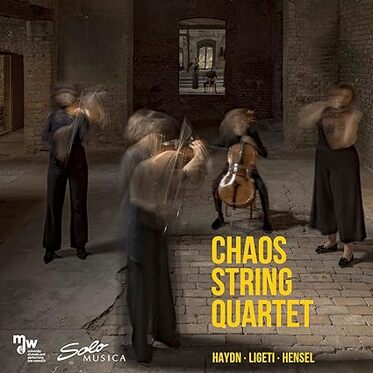
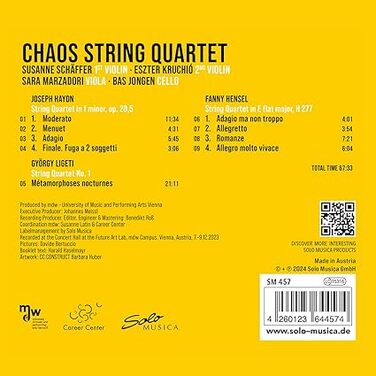
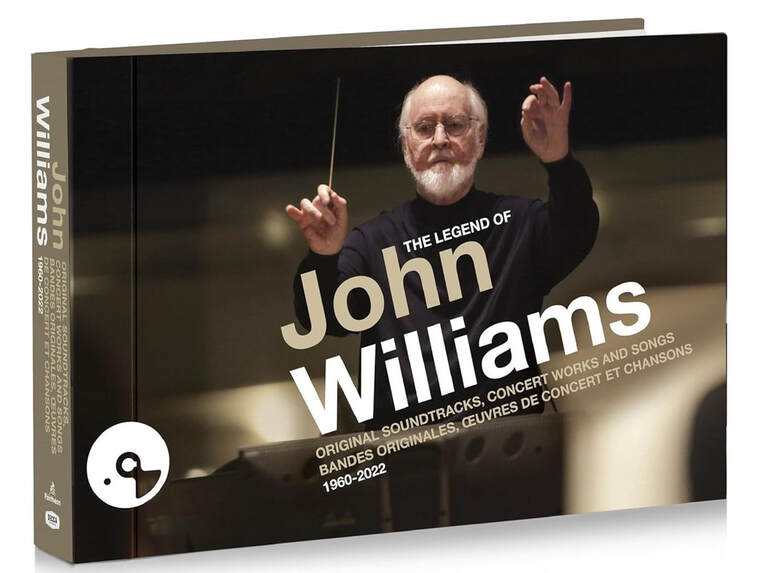
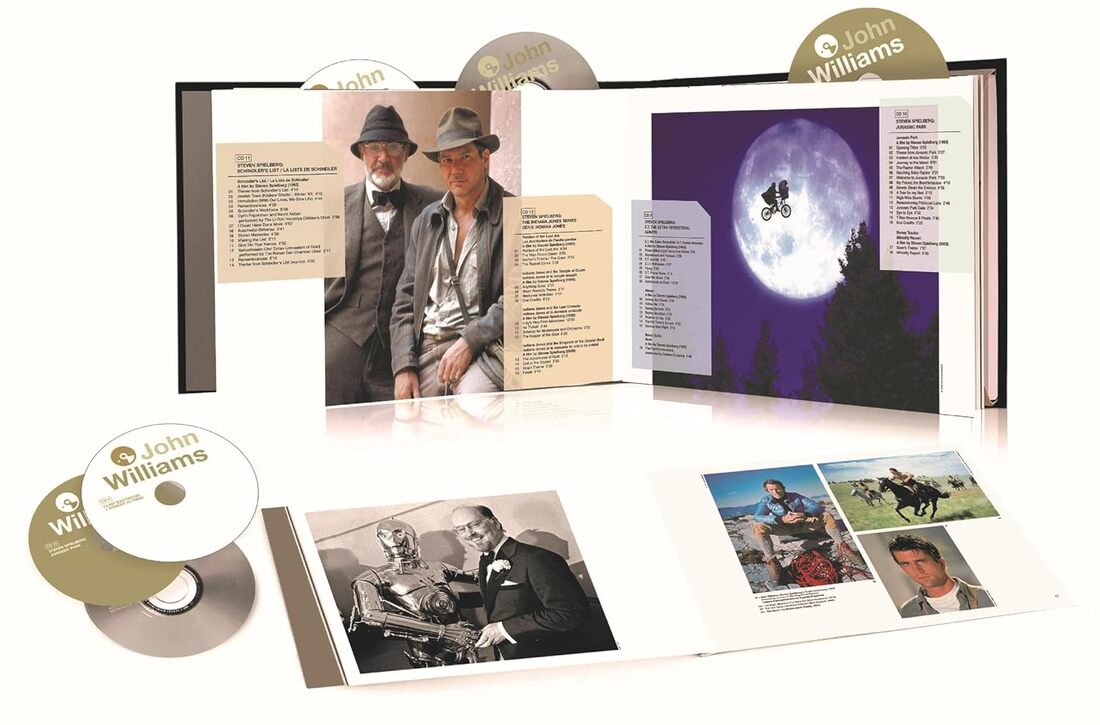
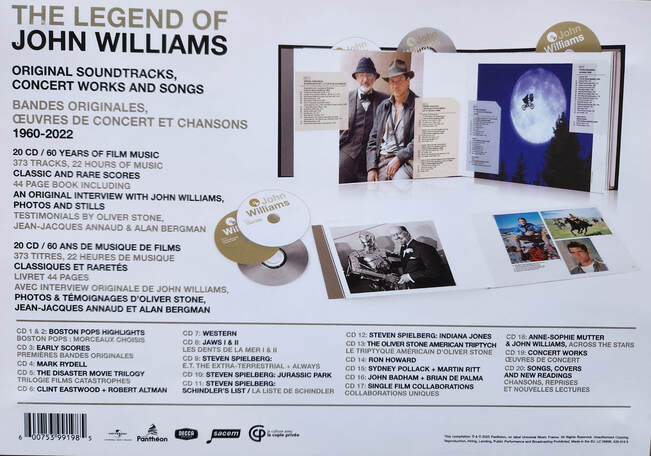
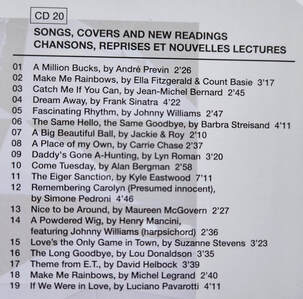
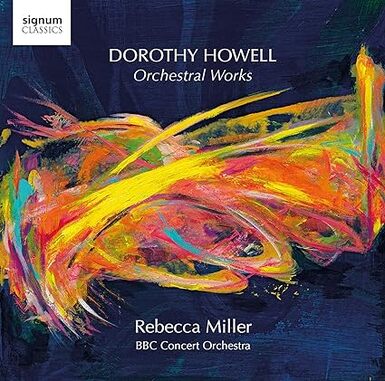
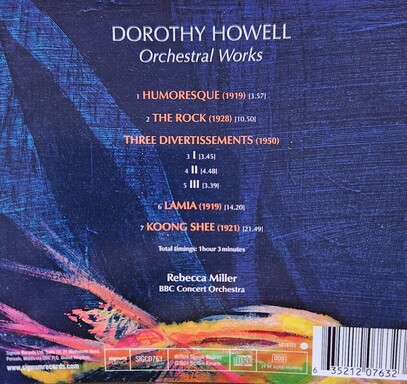
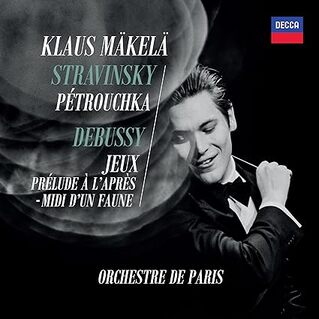
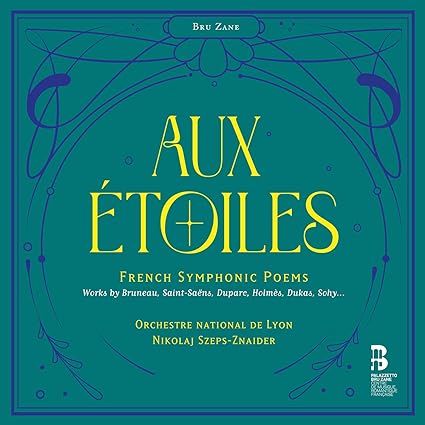
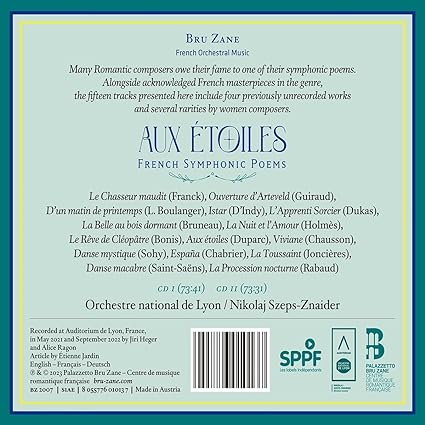
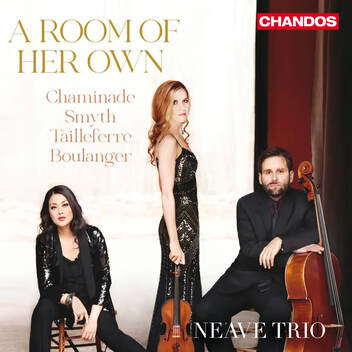
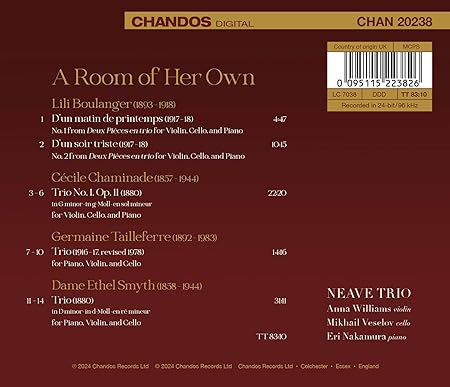
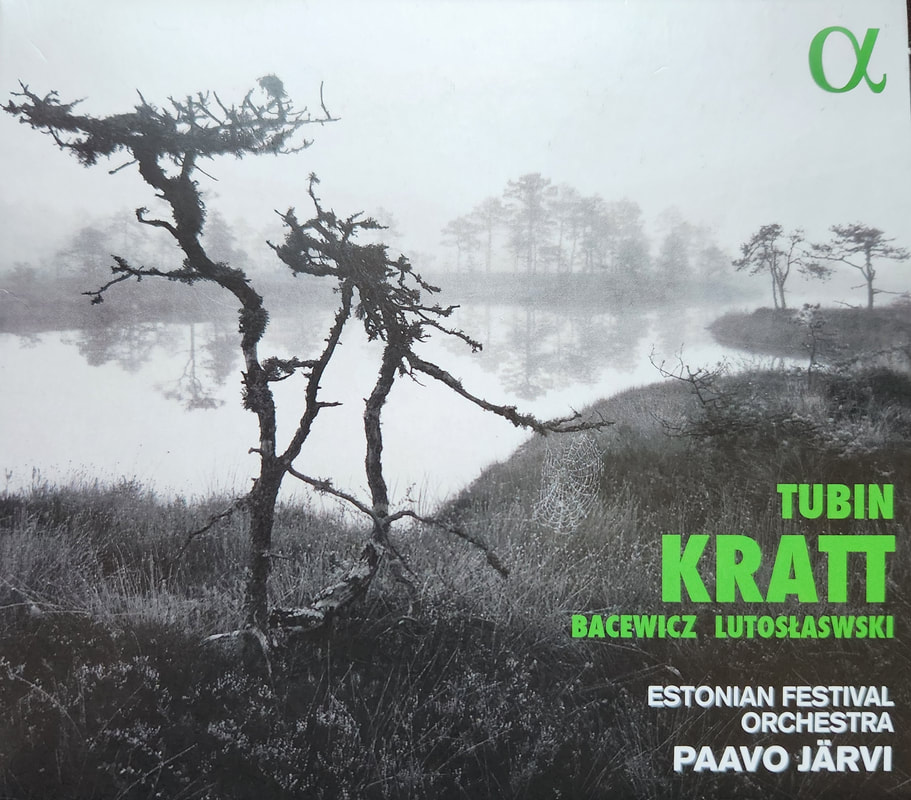
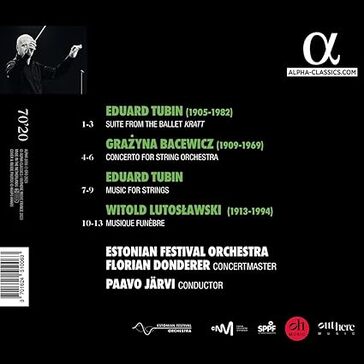
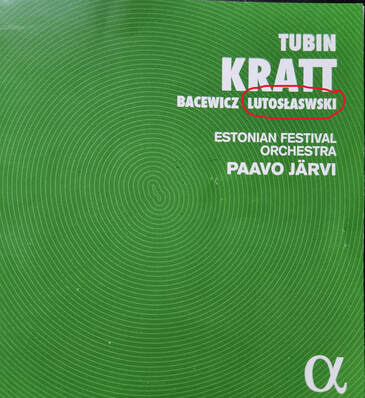
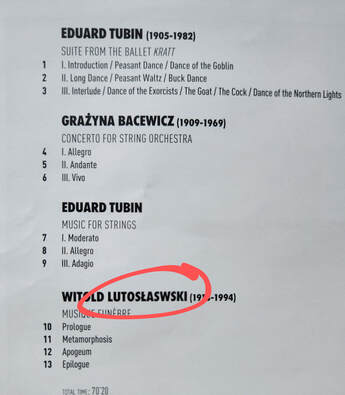
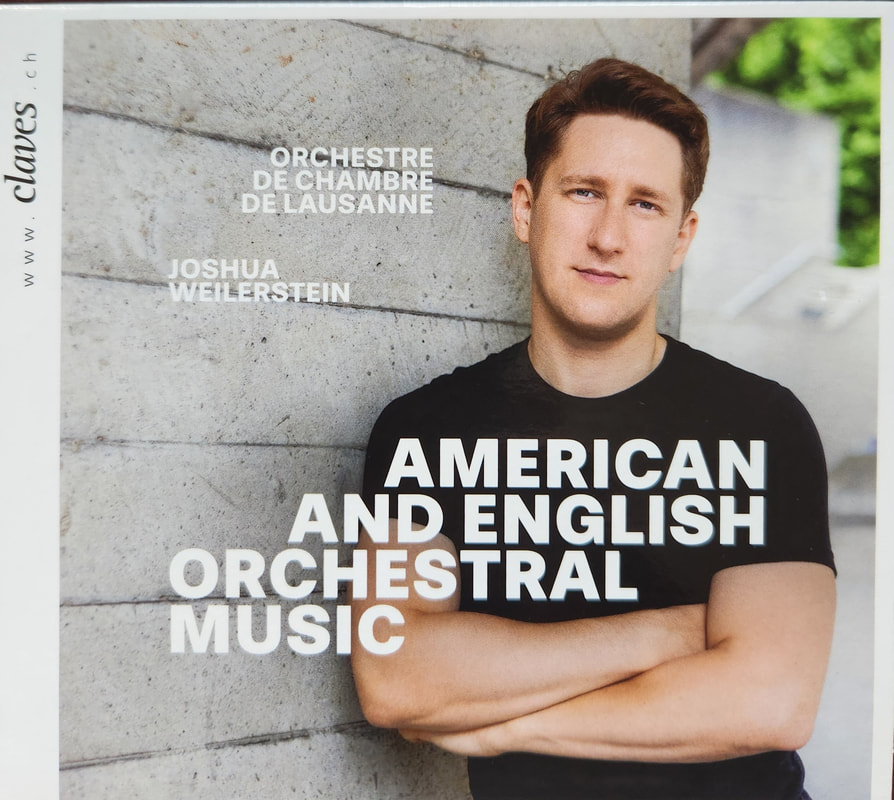
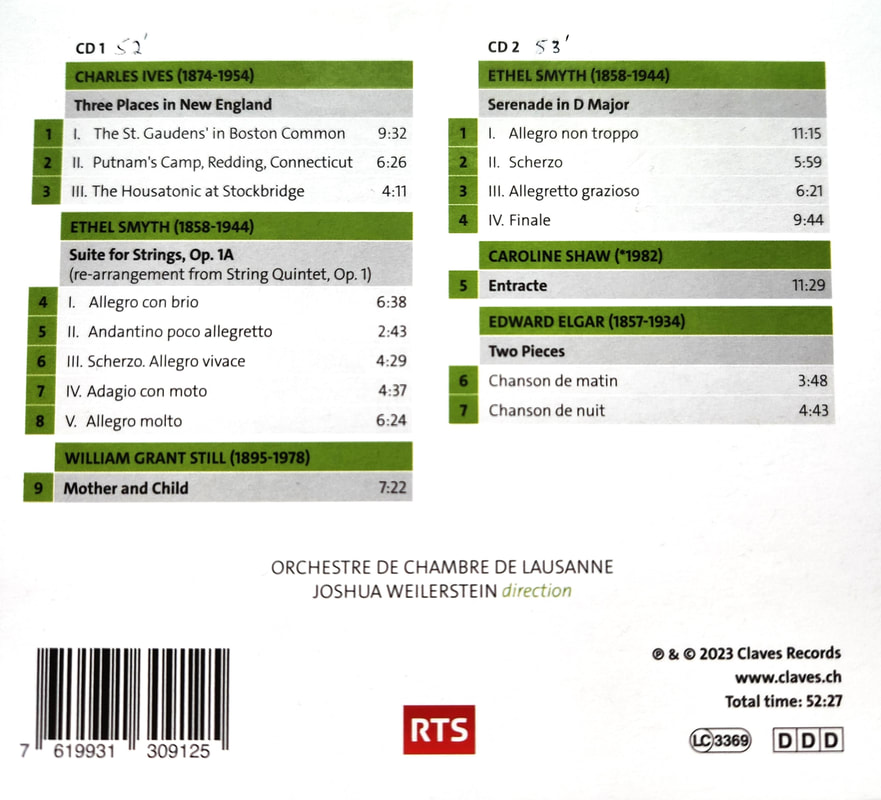
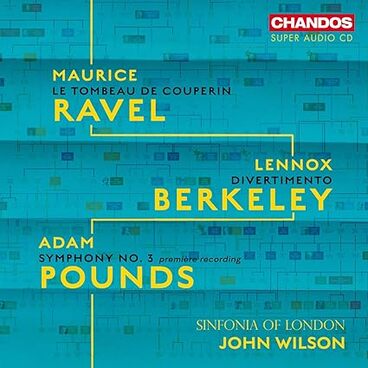

 RSS Feed
RSS Feed